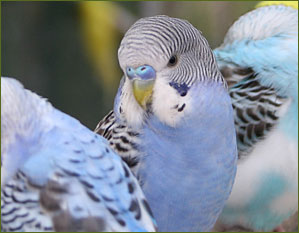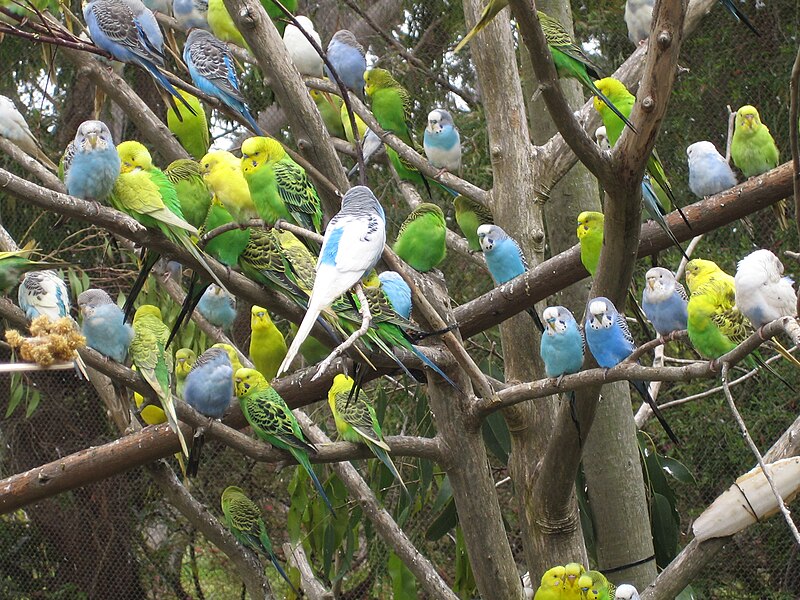
Swollen areas and assorted growths are regularly seen on the otherwise hearty budgerigars (parakeets) and, less commonly, on other parrots, finches and softbills. Ranging from harmless to quite serious, these typically arise from trauma, abscesses, tumors, ruptured air sacs, hernias, cysts or egg-binding, but other -less obvious maladies may also be at work.
A Caution
The following remarks, while written with budgerigars in mind, are applicable to all types of birds. Please note that they are provided as guidelines, to help you understand what might be happening… only a veterinarian can accurately diagnose your bird’s medical problems.
Even benign growths, if accompanied by shivering, loss of appetite, breathing difficulties or similar symptoms, are cause for concern and necessitate an immediate visit to your veterinarian.
Ruptured Air Sacs
Budgerigars and other birds may rupture air sacs by flying into windows or other obstacles during their time out of the cage. Bird-proofing flight rooms and gradually adjusting your pet to such will go a long way in alleviating this problem. Less commonly, air sacs may be damaged when startled birds crash into cage bars or walls.
A swollen area along the breast, which emits a characteristic “crackling” sound when gently touched, is a sure sign of a ruptured air sac. Unless involving a huge area, air sac damage usually resolves quickly on its own.
Hematomas
Trauma-related injuries that do not involve air sacs may result in hematomas…swollen, blood-filled injuries below the skin (in people, such are often called “black-and-blues”, but skin color change will not usually be evident in a bird).
Resulting from broken blood vessels, the pooled blood typical of hematomas is usually re-absorbed by the bird without incident.
Abscesses

Avian abscesses present as swollen, painful, reddish areas that are warm to the touch. The swollen area, or abscess, is filled with white blood cells and other blood borne compounds produced by the bird to battle infection. The abscess usually also contains dead tissue and living and dead bacteria or other pathogens. Budgerigars often exhibit abscesses below the eye, but they may also occur on the feet, in the mouth and at other locations.
As a defense measure, the abscess has been walled off from the rest of the bird’s body, but the toxins and bacteria contained therein can escape and spread via the blood to vital organs. This can happen very quickly, and usually has fatal results. Therefore, all abscesses should be treated promptly by a veterinarian.
Gout, a disease that takes hold when uric acid is stored in the joints and internal organs, sometimes produces abscess-like growths on the feet of budgerigars. Known as tophi, these growths will bleed extensively if impacted or cut, and should be addressed by a veterinarian.
Tumors
Tumors are often difficult to identify specifically, and may arise from a wide variety of diseases and conditions. Fatty tumors are usually benign and require monitoring but no other treatment, while others may be malignant.
Any unusual growth or swelling that you notice should be examined by a veterinarian. A biopsy may be used to confirm the doctor’s diagnosis if there is any doubt as to the nature of the problem.
Next time we’ll complete our review of noxious bird bumps with a look at feather cysts and cloacal swellings. Until then, please write in with your questions and comments.
Further Reading
You can access a detailed article concerning the types of tumors that afflict budgerigars here.
 That Bird Blog – Bird Care and History for Pet Birds
That Bird Blog – Bird Care and History for Pet Birds
